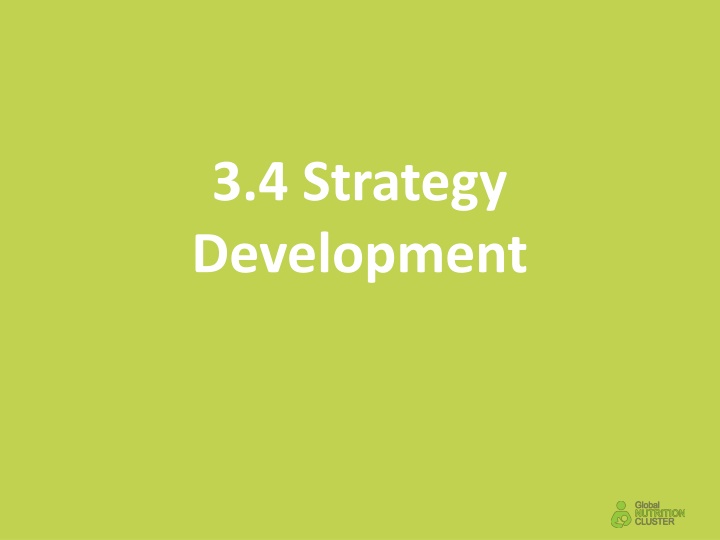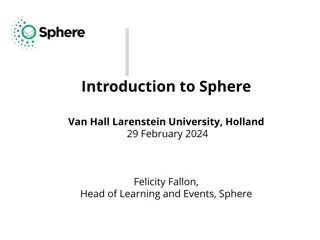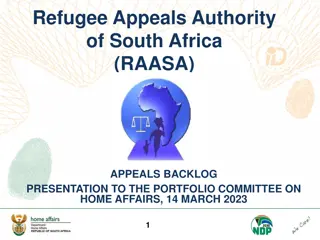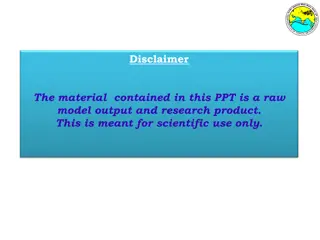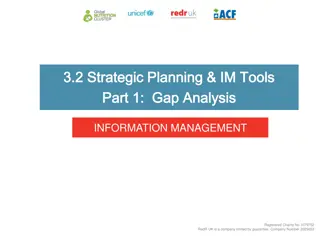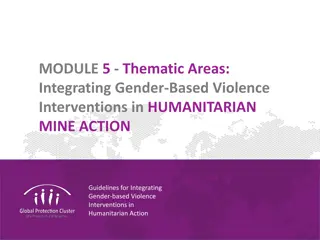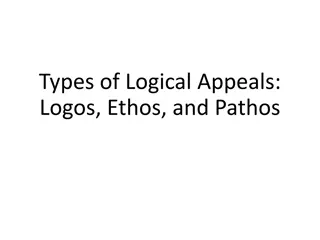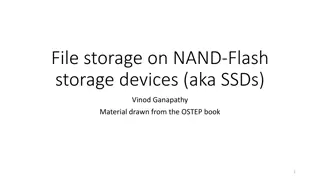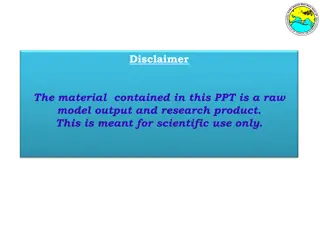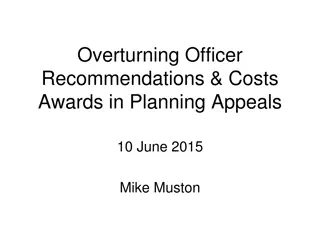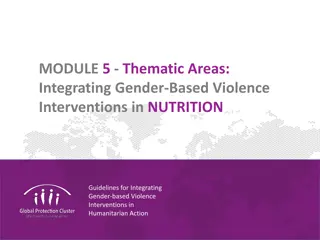Humanitarian Response Plans and Flash Appeals
This content explores the features and functions of Flash Appeals and Humanitarian Response Plans (HRP) in crisis management. It delves into the role of clusters in developing these plans, the processes involved in responding to sudden or protracted crises, and the significance of coordination and strategic objectives in the humanitarian response framework.
Download Presentation

Please find below an Image/Link to download the presentation.
The content on the website is provided AS IS for your information and personal use only. It may not be sold, licensed, or shared on other websites without obtaining consent from the author.If you encounter any issues during the download, it is possible that the publisher has removed the file from their server.
You are allowed to download the files provided on this website for personal or commercial use, subject to the condition that they are used lawfully. All files are the property of their respective owners.
The content on the website is provided AS IS for your information and personal use only. It may not be sold, licensed, or shared on other websites without obtaining consent from the author.
E N D
Presentation Transcript
3.4 Strategy Development
Learning Objectives Identify the features of a Flash Appeal and Humanitarian Response Plan (HRP) and explain their functions. Describe the role of the cluster in developing a Flash Appeal and HRP Describe the different processes for developing and costing a response to sudden-onset or protracted crises.
Flash Appeal A concise, top-line analysis of the scope and severity of the humanitarian crisis Sets out priority actions and preliminary requirements for the response, normally only for 3-6 months Issued three to five daysafter a sudden onset emergency, or if/when a significant and unforeseen spike in needs or a change in the context in protracted or slow onset crises Project-based with financial requirements used as a fundraising tool. Can be revised as new information emerges. A Flash Appeal may sit separately to an existing country HRP. Large-scale sudden onset disasters which have issued a Flash Appeal are required to issue a HRP for that emergency within 30 days.
Flash Appeals Developed by HCT with inputs from clusters Specific project proposals with costs developed by partners NCC should ensure nutrition, AAP gender, age, protection, etc. are included in proposals and funding criteria NCC also supports integration into HRP when needed
Humanitarian Response Plan Why? When? Sets overall direction and strategic objectives of response Communicates what will be done by clusters to respond, informed by assessed need. In most countries with protracted emergencies, it is a yearly or multi-year plan. Following sudden onset emergencies, and HRP should be revised/developed within 30 days. It follows needs assessments and an updated HNO (occasionally MIRA) it responds directly to these needs. Who? HC/HCT lead strategic development and sets priorities Clusters and organisations contribute to development of the plan OCHA supports the planning process by consolidating data, agreeing planning figures, drafting and finalising the plan. The inter-cluster coordination group supports these efforts What? Consists of two parts: a country strategy and cluster/sector response plans. The overall strategic objectives (SO) are set by the HC Clusters contribute to the SOs through cluster objectives and response plan
Secondary data Needs analysis Capacity mapping 1. Identify gaps 2. Review the priority needs 3. Establish the scope or boundaries 4. Take into account those needs being addressed by others. 5. Determine the target caseload 6. Describe the response priorities Advocacy and communication Implement plan Resource mobilisation Monitor and review
Response Analysis Analysis This is a key point in the process to determine what the cluster can actually do in terms of defining priorities, target and reach It is also a critical moment to define the most appropriate interventions strategy based on needs, capacities and resources Primary consideration is to maximise quality and coverage, and minimise gaps and duplication Also very important to consider how affected people s needs and priorities will be addressed as well as protection, gender, and other other cross-cutting issues Whenever possible, clusters should make use of local actors, experts and communities themselves to test and validate assumptions
Strategic and Cluster Objectives Country strategy The HC and HCT formulate the country strategy It is defined by the strategic objectives for the response and explains how the objectives will be fulfilled. The objectives will, as much as possible: - be governed by the needs and priorities specified in the HNO - be SMART (specific, measurable, attainable, relevant and time-bound) - be results-based, which is to say they will describe the desired outcomes Cluster plans Cluster plans will be prepared after the country strategy, They specify what the clusters will do to contribute to the strategic objectives. They should be specific about their activities, planned outputs and targets.
HRP Structure HUMANITARIAN RESPONSE PLAN
Costing of Cluster Response Plan Project-based costing: The clusters/sectors identify humanitarian activities, with indicators and targets in line with the strategic objectives and present them in the cluster/sector response plans of the HRP. All cluster/sector members submit their projects, including project budgets, through the online project system (OPS) database. The SAG or the Project Review Committee (PRC) vets projects according to an agreed timeline and criteria, and all projects are subsequently submitted to the HC for final approval. The total sector budgets are calculated as the sum of the approved project budgets. The total budget, as listed in the HRP and financial tracking service (FTS), is the sum of all sector budgets. Main responsibility for costing lies with cluster partners which the responsibilities for vetting process lies with the Clusters, the SAG or the PRC.
Costing of Cluster Response Plan Activity-based costing: Activity-based costing for humanitarian appeals refers to a method of estimating overall resource needs for a humanitarian response plan (HRP), using average costs per sectoral activity, per person served, or per item delivered in line with the humanitarian needs overview (HNO) and the country s strategic objectives. The costs per sector are determined on a unit cost per person per type of activity; sectors identify humanitarian activities, with indicators and targets, and present these in the sector response plans. Cluster/sectors must decide whether activities/services identified are grouped by intervention area (e.g. higher level outputs) and costed at this level, or whether smaller supporting activities under each intervention area (e.g. training, facilities repair, service operation) are costed separately. For each planned activity, an estimate budget is established, using an activity-based costing method, and these sector budgets form the total HRP budget. Projects are not vetted, nor registered in OPS. The responsibility for costing lies with the clusters, less with the cluster partners, however, the agreement on standard costs to be applied has to be agreed by all, which in the case of nutrition is not possible as for a number of interventions, there are no standardized costs.
Discuss What is the role of a NCC in drafting the HRP? How could a NCC ensure Cluster partners are engaged in this process?
Making It Work Essentials Constraints Plans become outdated Inaccurate Differing mandates & capacities of partners Seen as biased in favor of particular agencies/CLA Unrealistic Donor pressure might influence contents Equitable representation on advisory group (SAG or other structure, such as a Steering Committee) Evidence-based decisions Regular consultation Continuous review and modification Flexible, realistic and appropriate
Key Messages Flash Appeal and HRP are strategic planning documents for a humanitarian response. They both designed to address priority needs in a coordinated manner led by the HC and supported by OCHA and the clusters/sectors. Both are based on assessed, analysed and prioritized need. Clusters are instrumental in bridging the operational and the strategic. Cluster coordinator will need to be an advocate for the needs and priorities of affected people, and of partners to ensure resources are allocated and distributed consistently with the principle of impartiality.
